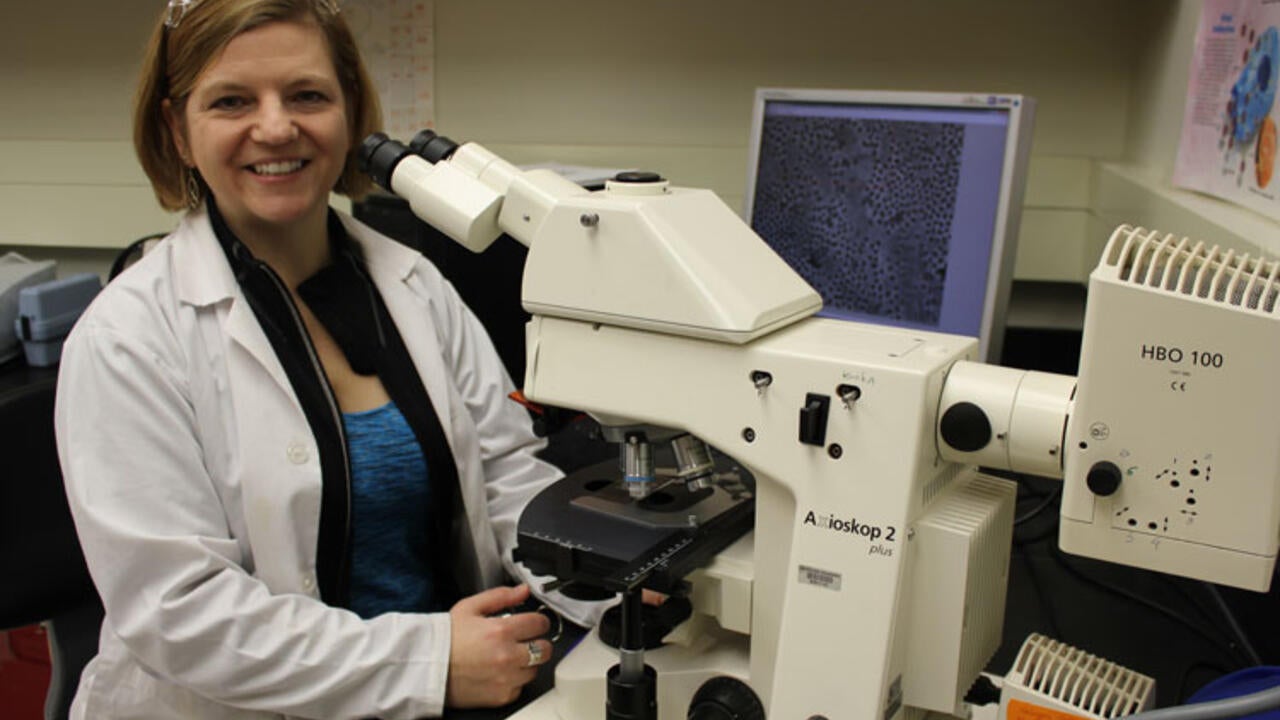
AI technology rapidly analyzes water samples
Professor Monica Emelko is excited about the potential of new AI technology to improve water monitoring at treatment plants

Professor Monica Emelko is excited about the potential of new AI technology to improve water monitoring at treatment plants
By Brian Caldwell Faculty of EngineeringProgress on new artificial intelligence (AI) technology by Waterloo Engineering researchers could improve monitoring at treatment plants to help ensure clean water and safeguard public health.
The researchers have developed AI software capable of identifying and quantifying different kinds of cyanobacteria, or blue-green algae, a threat to completely shut down water systems when it suddenly proliferates.
“It’s critical to have running water, even if we have to boil it, for basic hygiene,” says Monica Emelko, a civil and environmental engineering professor and a member of the Water Institute at Waterloo. “If you don’t have running water, people start to get sick.”
The operational AI system uses software in combination with a microscope to inexpensively and automatically analyze water samples for algae cells in about one to two hours, including confirmation of results by a human analyst.
Current testing methods, which typically involve sending samples to labs for manual analysis by technicians, take one to two days. Some automated systems already exist as well, but they require extremely expensive equipment and supplies.
According to Emelko and collaborator Alexander Wong, a systems design engineering professor at Waterloo, the AI system would provide an early warning of problems since testing could be done much more quickly and frequently.
Moving forward, the goal is an AI system to continuously monitor water flowing through a microscope for a wide range of contaminants and microorganisms.
“This brings our research into a high-impact area,” says Wong, a Canada Research Chair in artificial intelligence and a founding member of the Waterloo Artificial Intelligence Institute. “Helping to ensure safe water through widespread deployment of this technology would be one of the great ways to really make AI count.”
The researchers estimate it may take two to three years to refine a fully commercial sample testing system for use in labs or in-house at treatment plants. The technology to provide continuous monitoring could be three to four years away.
“We need to protect our water supplies,” says Emelko, noting climate change and development are both increasing the risks. “This tool will arm us with a sentinel system, a more rapid indication when they are threatened.
“The exciting piece is that we’ve shown testing utilizing AI can be done quickly and well. Now it’s time to work through all the possible scenarios and optimize the technology.”
Adjunct engineering professor Chao Jin, doctoral student Jason Deglint and research associate Maria Mesquita are also collaborators.
A study on the research, Quantification of cyanobacterial cells via a novel imaging-driven technique with an integrated fluorescence signature, was recently published in the journal Scientific Reports.

Engineering master's student Nayeema Nonta (left), one of the three paper authors, and her supervisor, Dr. Sirisha Rambhatla, in a large server room with the computer power needed to develop their new LLM training technique. (University of Waterloo)
Read more
Waterloo researchers develop highly efficient AI training system that paves the way for cheaper, greener “intelligent partners”

Read more
Engineering researchers team up to tackle the plastics pollution problem with microbial innovation and engineering design

Read more
15 University of Waterloo researchers have been named to the annual Highly Cited Researchers™ list for significant contributions to their specific fields of research
Read
Engineering stories
Visit
Waterloo Engineering home
Contact
Waterloo Engineering
The University of Waterloo acknowledges that much of our work takes place on the traditional territory of the Neutral, Anishinaabeg, and Haudenosaunee peoples. Our main campus is situated on the Haldimand Tract, the land granted to the Six Nations that includes six miles on each side of the Grand River. Our active work toward reconciliation takes place across our campuses through research, learning, teaching, and community building, and is co-ordinated within the Office of Indigenous Relations.